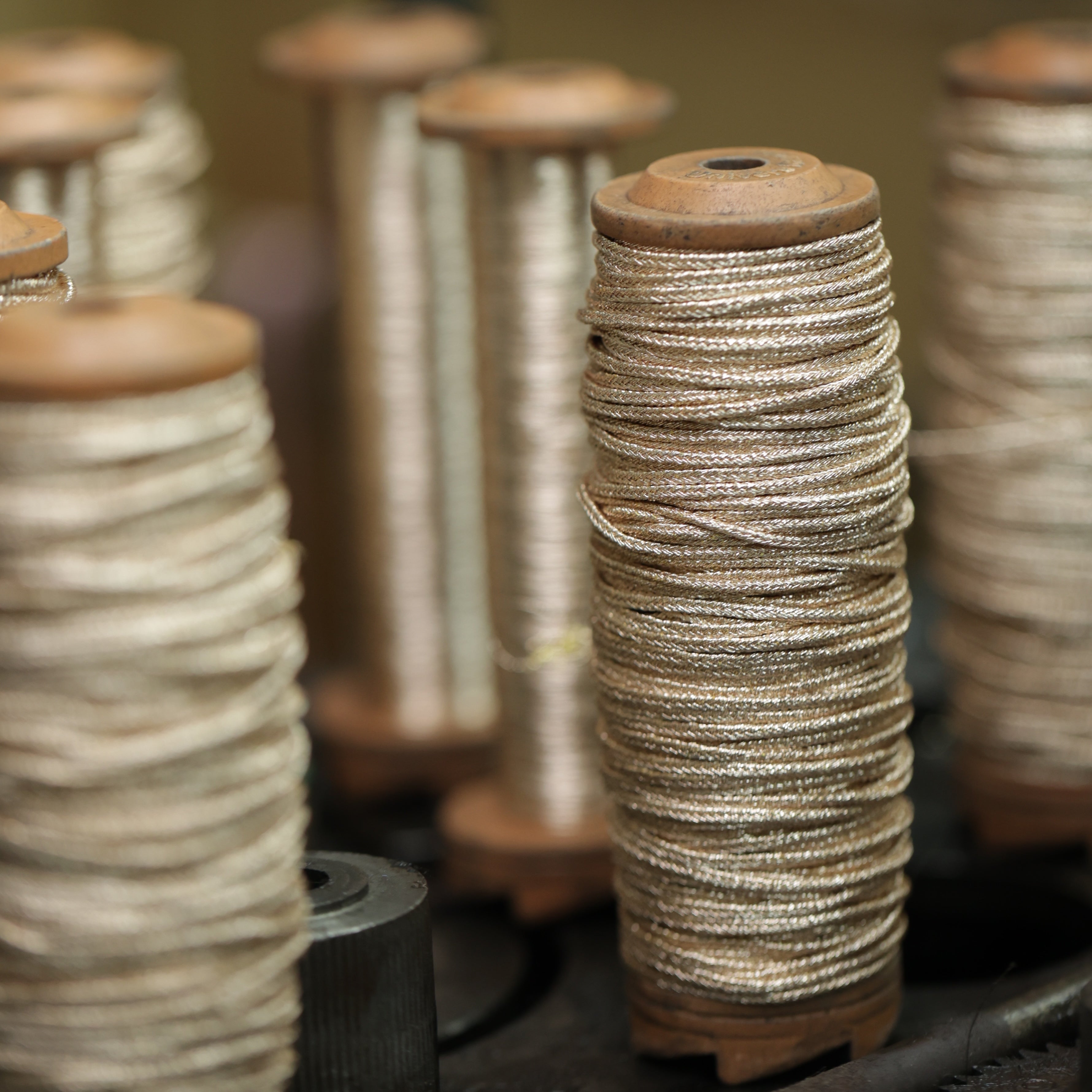Article: The history and origin of Sfifa yarn - A journey through time

The history and origin of Sfifa yarn - A journey through time
Les fils Sfifa, un élément incontournable de l'art textile marocain, représentent une tradition profondément enracinée dans l'héritage culturel du pays. Utilisé principalement pour embellir les coutures des vêtements, la Sfifa est synonyme de l'histoire riche et de l'artisanat exquis du Maroc.
Cet article explore les origines, la signification culturelle et les adaptations modernes de la Sfifa, avec un accent particulier sur son application dans les accessoires contemporains de notre marque marocaine Maaÿaz.
Une origine ancienne et des utilisations précoces
Les origines du fil Sfifa remontent aux 9ème et 10ème siècles, lors de l'établissement des premières grandes dynasties marocaines, telles que la dynastie Idrisi. Les pratiques de tissage et de broderie, y compris celles concernant la Sfifa, ont été considérablement influencées par l'afflux d'artisans qualifiés venus d'Andalousie à la suite de la Reconquista.
Ces artisans ont apporté avec eux des techniques et des styles sophistiqués qui ont profondément enrichi les arts textiles marocains.
Artisanat et techniques
Le fil Sfifa est traditionnellement fabriqué à partir de soie, bien que les variantes modernes puissent inclure un mélange de soie et de fibres synthétiques. Le processus commence par le filage de fils fins, suivi de leur teinture avec des colorants naturels ou synthétiques pour obtenir des couleurs vibrantes. Les artisans tissent ensuite ces fils à l'aide de métiers à tisser spécialisés pour créer les motifs et les textures caractéristiques du Sfifa.
La technique de tissage est très complexe et requiert précision et expertise. Les motifs intègrent souvent des motifs géométriques et floraux, chacun symbolisant divers thèmes culturels tels que la prospérité et la protection. Ce savoir-faire méticuleux a été transmis de génération en génération, assurant la préservation des techniques traditionnelles.
Signification culturelle
Au Maroc, les fils de Sfifa ont une valeur culturelle importante. Il fait partie intégrante de divers vêtements traditionnels portés lors d'occasions spéciales, en particulier les mariages. Les motifs élaborés et l'aspect luxueux des vêtements ornés de Sfifa symbolisent le statut et l'élégance. Au-delà de l'esthétique, l'artisanat du Sfifa crée une communauté et une continuité, car les artisans transmettent leur savoir-faire aux jeunes générations, préservant ainsi ce patrimoine culturel.
Adaptations modernes - Innovations de Maaÿaz
Ces dernières années, la polyvalence des fils Sfifa a transcendé l'habillement traditionnel pour trouver sa place dans la mode et les accessoires contemporains. La marque marocaine Maaÿaz est à l'avant-garde de cette adaptation moderne avec les bijoux Sfifa. Maaÿaz a ingénieusement incorporé la Sfifa dans des accessoires de tous les jours, créant des bracelets, des colliers et d'autres articles uniques et élégants.
Les bracelets Sfifa de Maaÿaz témoignent de l'attrait durable des fils Sfifa. En associant l'artisanat traditionnel au design moderne, Maaÿaz offre un regard neuf sur l'héritage marocain, le rendant accessible et attrayant pour un public mondial. Ces bijoux Sfifa conservent les détails complexes et les couleurs vibrantes des fils dorés de la Sfifa, tout en s'adaptant aux tendances de la mode contemporaine.
Conclusion
Les fils Sfifa sont plus qu'un simple élément décoratif ; c'est un symbole de la riche histoire culturelle et de l'ingéniosité artistique du Maroc.
De ses origines anciennes dans les centres textiles de Fès à ses adaptations modernes par des marques comme Maaÿaz, les fils Sfifa incarnent un voyage dans le temps. Alors que nous continuons à célébrer et à préserver cette forme d'art unique, la Sfifa reste un élément précieux de la culture marocaine, jetant un pont entre le passé et le présent.

